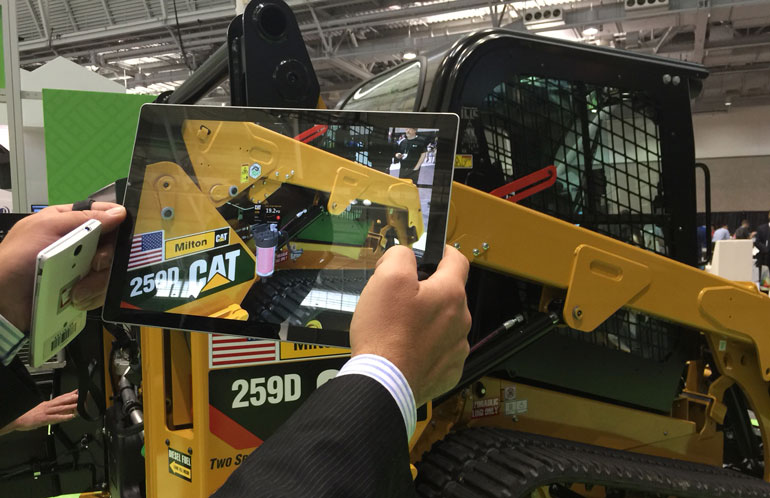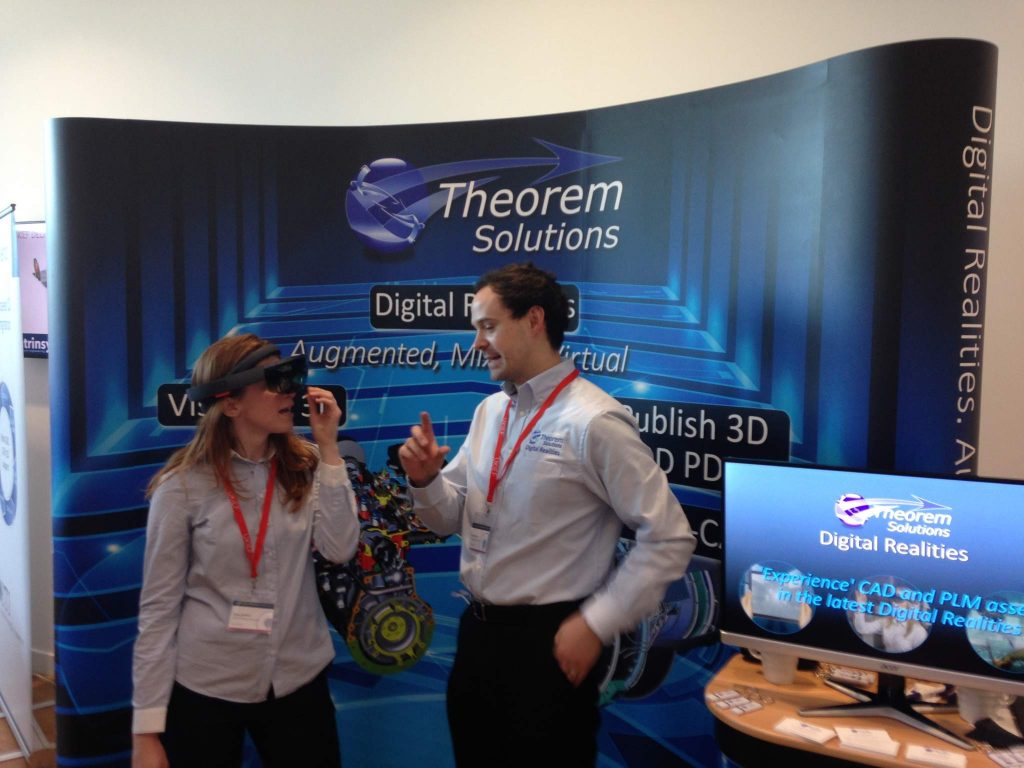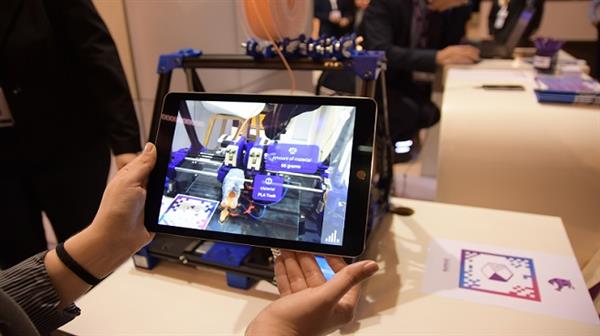Chicago’s manufacturing innovation accelerator UI LABS and the Augmented Reality for Enterprise Alliance headquartered in Wakefield, MA, have released the world’s first augmented reality (AR) guidelines for industrial use.
With the manufacturing environment in the process of a digital revolution, with 3D printer equipped, and robot operated production lines, such documents are helpful to factories looking to be become “smart” and future-proof.
Concept Laser’s Automated Guided Vehicle (AGV) for 3D printed parts in action at Formnext. Clip via TCT Magazine.
AR machine assembly, inspection, and product design
65 organizations contributed to the new guidelines for AR hardware and software. The collective was led by aerospace and defence manufacturer Lockheed Martin, consumer good corporation Procter & Gamble, and Caterpillar. As previously reported, Caterpillar has partnered with additive manufacturing solutions provider FIT AG.
The documents outline AR requirements for devices that help in areas such as machine assembly, inspection and repair, and product design.

On the topic of 3D modeling, six input formats are specified in the software guidelines. These include .pvz from Creo, AutoDesk .obj and .fbx files and CAT Parts or Products, and 3D Via from Dassault Systèmes’ Catia, that we experienced at the UK Intelligent Engineering Forum in Coventry.

Both hardware and software guidelines give companies an understanding of an acceptable standard in AR, and give providers intelligence to influence future products and roadmaps. The full documents can be viewed online at AREA’s website.
3D printing and augmented reality
In other 3D printing AR news, the Catalonian Technology Center Eurecat, based in Barcelona, has demonstrated the potential of AR for 3D printers in a tablet app that allows real-time monitoring of a build. By using QR codes placed on the print bed and desk space beside the 3D printer, viewing a build using a tablet’s camera gives readings of the type and amount of material used to make an object.

In a creative twist, the AR viewer also displays an animated 3D model of the object printing and interacts with the QR square placed on the desk. A full clip of this activity can be viewed on Eurecat’s Facebook page.
Though Eurecat’s approach is currently child-oriented, such process are also increasing finding industrial applications, as in Dassault Systèmes’ 3DEXPERIENCE platform, optimized for use in augmented and virtual reality.
For more of the latest industry 4.0 sign up to the 3D Printing Industry newsletter, and follow our active social media sites.
Don’t forget to vote in the first annual 3D Printing Industry Awards.
Tickets for the 3D Printing Industry Awards are also now available here.
Featured image: Artist’s impression of augmented reality 3D part inspection on the HoloLens. Photo via Microsoft



